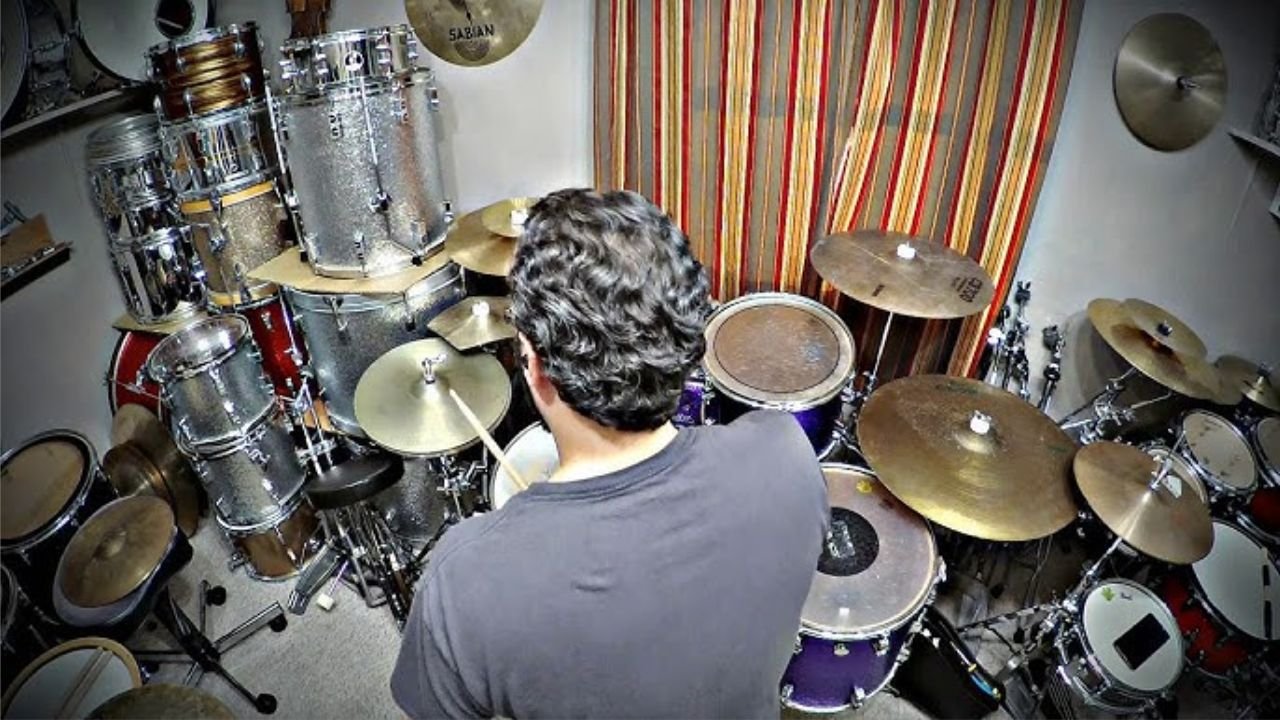Have you ever wondered about the unique sound and shape of the scimitar drum? This fascinating percussion instrument, with its distinctive curved design, has captivated musicians and audiences alike. The scimitar drum, deeply rooted in cultural traditions, offers a rich tapestry of history and rhythm that continues to inspire percussion enthusiasts and cultural music aficionados today. In this post, we’ll take a deep dive into the world of the scimitar drum, exploring its history, playing techniques, and its role in modern music.
History and Origins
Historical Background
The scimitar drum traces its origins to ancient civilizations, where it was used in ceremonial rituals and celebrations. Its unique shape mimics the curve of a scimitar sword, symbolizing elegance and power. These drums were not only instruments of music but also tools for storytelling and communication within communities. Over the centuries, the scimitar drum has traveled across continents, adapting to various cultural contexts while retaining its core essence.
Evolution Over Time
Throughout history, the scimitar drum has evolved in design and purpose. In some cultures, it became an integral part of religious ceremonies, while in others, it was a symbol of social status. The drum’s adaptability allowed it to be embraced by diverse cultures, each adding their own touch to its construction and playing style. This evolution has enriched the drum’s repertoire, making it a versatile instrument in both traditional and contemporary settings.
Cultural Significance
The scimitar drum holds a special place in many cultural traditions. From Africa to the Middle East and beyond, it is often associated with rites of passage, weddings, and harvest festivals. Its rhythmic beats accompany dances that tell stories of ancestry and heritage. In some communities, the drum is believed to possess spiritual powers, capable of connecting the physical and metaphysical realms. This deep cultural significance continues to resonate with musicians and audiences around the world.
Design and Construction
Unique Features
The scimitar drum’s design is characterized by its curved body and intricate craftsmanship. Traditionally made from wood and animal hide, modern versions may incorporate synthetic materials for enhanced durability and sound quality. The curvature not only gives it a distinct appearance but also affects the acoustics, producing a resonant and melodic tone that sets it apart from other percussion instruments.
Craftsmanship
Creating a scimitar drum requires skilled craftsmanship. Artisans meticulously select materials, ensuring the wood is seasoned to produce the desired sound. The process involves shaping the body, stretching the drumhead, and tuning it to achieve the perfect pitch. This attention to detail is essential to preserving the drum’s unique qualities and ensuring it can withstand the rigors of performance.
Comparisons
When compared to instruments like the djembe or conga, the scimitar drum offers a different tonal palette. Its curved shape allows for a wider range of pitches and dynamic expression. While the djembe is known for its deep bass tones and the conga for its rhythmic clarity, the scimitar drum combines these elements with its melodic resonance, making it a versatile addition to any percussion ensemble.
Playing Techniques
Basic Strokes
For beginners, mastering the basic strokes is the first step in playing the scimitar drum. Techniques such as the open stroke, bass stroke, and slap form the foundation of rhythm creation. Practicing these fundamental strokes helps develop the coordination and timing needed to progress to more complex patterns.
Advanced Techniques
Experienced players can explore advanced techniques to expand their repertoire. These include ghost notes, rim shots, and syncopated rhythms that add depth and complexity to performances. Incorporating these techniques allows musicians to push the boundaries of traditional drumming and create innovative compositions.
Learning Resources
Aspiring scimitar drum players can access a wealth of resources to aid their learning. Online tutorials, instructional books, and workshops offer step-by-step guidance on mastering the instrument. Joining percussion communities and attending cultural music events can also provide valuable opportunities for hands-on experience and collaboration with fellow enthusiasts.
Use in Modern Music
Fusion Genres
In recent years, the scimitar drum has found a place in fusion genres, blending traditional sounds with contemporary music styles. Artists experiment with combining the drum’s distinctive tones with electronic beats, creating a rich tapestry of sound that captivates audiences. This fusion of old and new continues to push the boundaries of musical expression.
Film and Television
The scimitar drum has made its mark in film and television scores, contributing to atmospheric and emotive soundtracks. Its resonant beats enhance dramatic scenes, adding an exotic and intriguing element to visual storytelling. Composers appreciate the drum’s ability to evoke a sense of adventure and mystery, making it a sought-after instrument in the industry.
Notable Performances
Notable performances featuring the scimitar drum have captivated audiences worldwide. Renowned percussionists showcase their skills in concerts and festivals, demonstrating the instrument’s versatility and expressive potential. These performances inspire budding musicians to explore the possibilities of incorporating the scimitar drum into their own compositions.
Maintenance and Care
Cleaning and Storage
Proper maintenance is crucial for preserving the scimitar drum’s sound quality and longevity. Regular cleaning with a soft cloth and mild detergent keeps the drumhead and body in optimal condition. Storing the drum in a cool, dry place when not in use prevents damage from humidity and temperature fluctuations.
Repair and Upkeep
Over time, wear and tear may necessitate repairs to the scimitar drum. Replacing the drumhead or tightening loose components ensures it remains in peak performance condition. Seeking professional repair services is advisable to maintain the instrument’s integrity and value.
Longevity
With proper care, the scimitar drum can last for many years. Regular maintenance, combined with mindful handling during performances, ensures its continued functionality and beauty. Musicians who invest time and effort into caring for their drum are rewarded with an instrument that delivers consistent and captivating sound.
Future of the Scimitar Drum
Technological Innovations
The future of the scimitar drum is bright, with technological innovations enhancing its design and usability. Digital interfaces and electronic enhancements offer new avenues for exploration, allowing musicians to experiment with sounds previously unattainable. These advancements open up exciting possibilities for integrating the drum into diverse musical contexts.
Educational Initiatives
Educational initiatives are playing a pivotal role in promoting the scimitar drum to a wider audience. Schools and music programs are incorporating the instrument into their curriculum, nurturing the next generation of percussionists. Workshops and masterclasses provide aspiring musicians with the opportunity to learn from experienced players and develop their skills.
Cross-Cultural Collaborations
Cross-cultural collaborations are enriching the scimitar drum’s global presence. Musicians from different backgrounds come together to create innovative compositions that celebrate diversity and creativity. These collaborations foster cultural exchange and understanding, highlighting the universal language of music.
You May Also Like: Rzinho’s Digital Odyssey Captivates Global Audiences
Conclusion
The scimitar drum, with its rich history and cultural significance, continues to captivate musicians and audiences alike. From its ancient origins to its role in modern music, the drum’s melodic resonance and versatility make it a cherished instrument among percussion enthusiasts. Whether you’re a music student, cultural aficionado, or aspiring drummer, the scimitar drum offers endless opportunities for exploration and creativity. Immerse yourself in the world of the scimitar drum and discover the joy of mastering this unique percussion instrument.
FAQs
How is the scimitar drum different from other drums?
The scimitar drum features a distinctive curved shape that produces a unique melodic tone, setting it apart from other percussion instruments.
What materials are used to make a scimitar drum?
Traditionally, scimitar drums are made from wood and animal hide, but modern versions may incorporate synthetic materials for durability and sound quality.
Can I learn to play the scimitar drum online?
Yes, there are numerous online tutorials, instructional videos, and courses available to help you learn to play the scimitar drum at your own pace.
How can I maintain my scimitar drum?
Regular cleaning, proper storage, and timely repairs are essential for maintaining the sound quality and longevity of your scimitar drum.
What role does the scimitar drum play in modern music?
The scimitar drum is used in fusion genres, film scores, and notable performances, adding an exotic and captivating element to contemporary music.











